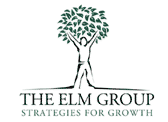 |
 |
|
 |
|
THE SWEET SPOT By Ed Lahue In baseball and tennis, the sweet spot delivers the best results if the ball hits in a certain spot on the bat or the racquet. It’s where it has the most impact. This same principle applies to your business as well. There are hidden sweet spots that, if discovered and executed upon, offer tremendous growth opportunities. In its simplest form, these sweet spots exist where your core competencies and key market trends match up. The first challenge is to thoroughly understand what your core competencies are relative to the competitive marketplace.
Many business executives and managers will think about strengths of their business. While all core competencies are strengths, not all strengths are core competencies. When most businesses talk about their strengths, they are usually reviewing them internally without a competitive comparison. A true core competency has competitive “teeth.” It’s a clear competitive advantage where the closest competitor would require large amounts of capital and/or time to duplicate. And the best competencies are nearly impossible to copy because of consistent, focused strategic positioning in the market place. It’s ultimately about your brand equity. Business or brand teams often boast of the many strengths they believe they possess. One example is the sales force. Many firms believe their sales force is a core competency, when in reality it’s more of strength without any competitive advantage. It’s obviously critical to have a well-trained sales force, but in most established markets this is the minimum entry to play in the market. My question to these companies is: Does your biggest competitor have a great sales force? You can imagine the typical answer. So a core competency is a core strength or equity that offers a competitive advantage in a particular market, market segment, or a target market. It is also important to understand this distinction in terms of knowing how broadly these competencies apply. Most businesses are truly leveraging competencies in a market segment or specific target market. When we speak of target market, we are talking about a group of similar customers that can be reached effectively and efficiently. Overall, when assessing these areas, it starts to answer the question, what is your business better at than your competition? Bottom line, core competencies are at the heart of the competitive advantage and must be weighed as a key part of any strategy development.
The second challenge is keeping up with a clear understanding of the marketplace. Every market changes at a different rate, but they all change. So with change being evident, it is critical for companies to understand the market trends, particularly changing customer needs. I know some companies who are still “flogging” their sales force for not selling a product or service no one wants anymore. They are attempting to solve the wrong problem with more training or some other quick fix, instead of clearly understanding the market. If you’re successfully monitoring changing customer needs, you should know about a shift right before or at least during the shift. Most successful new product efforts were not reliant on the customer telling them what to produce, but instead relied on a deep-rooted, intimate understanding of the customers’ problems and frustration with the current situation. It’s really about understanding the insights first. The Chrysler mini-van is probably the best example of this. The consumer didn’t say, “I want a mini-van.” They said they wished they could have the storage and space of the old station wagon combined with the drivability of a mid-sized car. Obviously, I am oversimplifying the years of consumer research and product development used to bring the mini-van to market. So the goal here is not to count the dead bodies, a sort of “after the fact” account of the marketplace. Instead, take a dynamic view of the key trends and insights, and where the customer is going, not where the customers are currently. Other market trends include industry factors such as technology, government regulatory issues, and political factors. The real significant market trends are usually where multiple factors all point in the same general direction. Think of it as a hockey game. If you don’t have the puck, where should you skate? Most would skate to where the puck is. True understanding of the market and the customer allows a business to skate to where the puck is going. Where the market is going is the real fertile ground to explore against your core competencies and your brand equity/positioning.
Now assuming a business team has done an egoless assessment of the core competencies and thoroughly understands where the market and customer is going. The sweet spot should be an easy find, right? Well, not so fast. The key challenge here is to understand where the core competencies and market trends vector. A company may have a core competency that was meaningful once upon a time, but is not anymore since the market and customer needs have shifted. On the other hand, the fertile ground could be located in a spot where the firm’s capabilities and brand cannot be stretched, usually more than one adjacent move. (See my article titled, “Does This Dog Hunt? – How to Know if That New Opportunity Will Work in the Marketplace.”) Many firms do the market understanding and then thinly apply an out-dated or irrelevant competency or brand positioning. One great example of a core competency applied the wrong way is Gerber Singles. I’m not talking about the single serve baby food that has been popular with young mothers for generations. I’m talking about Gerber’s attempt to latch its core competency of single serve processed food to a growing elderly population 20 years ago. Gerber failed miserably with this product in the market. I know you are shaking your head right now in disbelief, but this was a real product on the market, though very short-lived. Gerber’s core competency of mass production of single serve processed foods was not relevant to the market trend of an aging population.
There are several factors in leveraging the sweet spot for growth. Timing is probably the most critical factor, because if a business begins to predict a market trend and gets out there too quick, it can be fatal. In addition to the current losses, it can bruise the corporate reputation with the trade channels. The fax machine failed miserably when it was first introduced. The company that stuck their neck out saw the trend coming, but they were just a few years to soon. Another factor is technology, for a number of reasons. Either the market is ready and the technology is not quite feasible or the technology surpasses the market demand and understanding by warp speed. Many great new opportunities were discovered first by understanding the market and then the technology was developed to deliver the results needed. However, more recently, high-tech opportunities have been tackled the other way around. This is where a broad technology has been developed and in the mining of the various applications it’s looking for a market to land on. Sometimes this can achieve great results by creating new products and services even though no clear demand existed. However, keep in mind these new technologies or applications were really solving an accepted problem without the customer really looking for it. So it’s crucial that the business or brand team
truly understand the underpinning for shifts in the marketplace, as well
as the key customer insights and how far their capabilities can
carry them. Otherwise, attempting to find the sweet spot can get real sour,
real quick. Ed Lahue, President and Sr. Consultant of The ELM Group (www.elmgrp.com) The ELM Group ALL RIGHTS RESERVED
|
||||||||
|
Home | Services | Why
The ELM Group | IF
Approach | Leadership | Clients & Experience ©2005 The ELM Group. All rights reserved.
| ||
